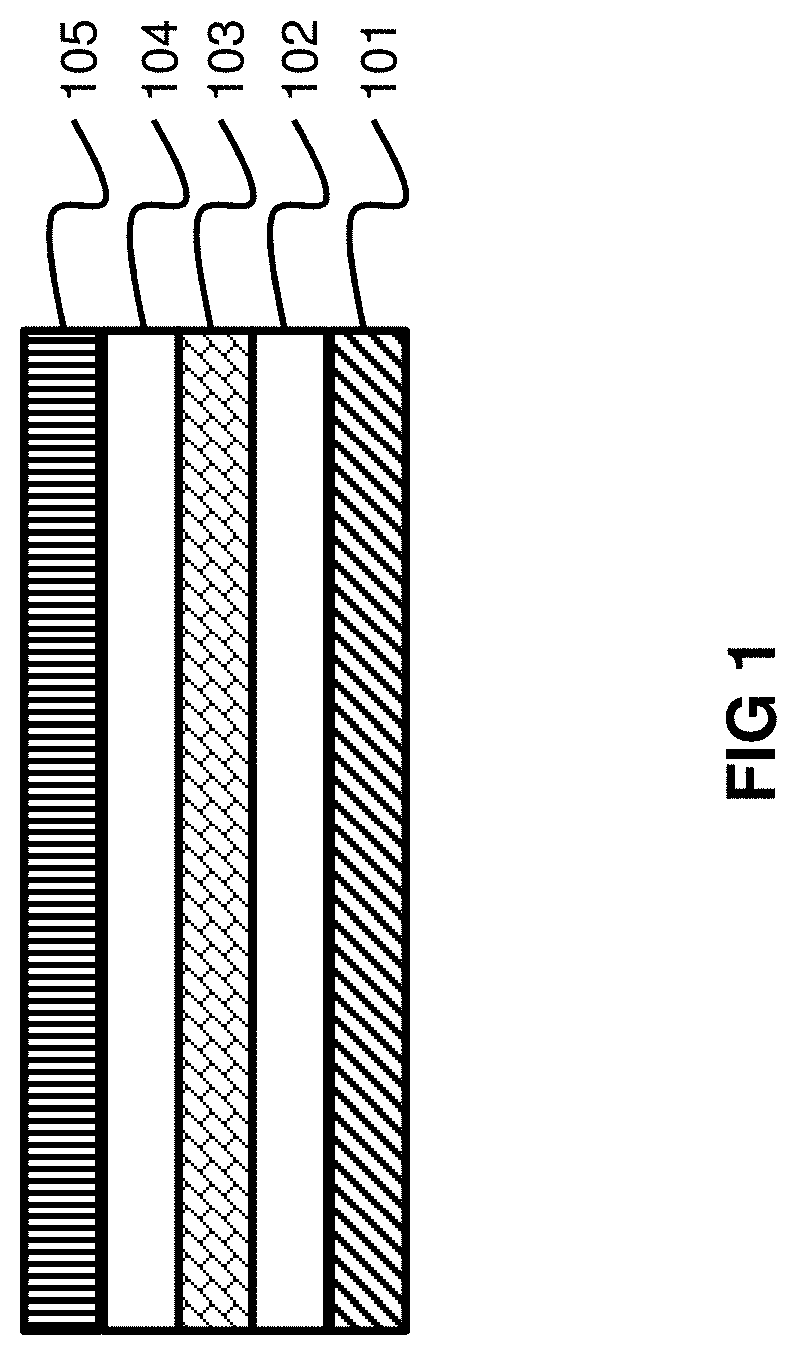Color changeable adhesives and methods of making such adhesives
a technology of color changeable adhesives and adhesives, which is applied in the direction of non-macromolecular adhesive additives, adhesive types, chemistry apparatuses and processes, etc., can solve the problems of increasing manufacturing costs and the complexity of indicators, reducing the number of layers, and adhesive sticky may tend to aggravate or disrupt the chemistry of color changeable composites
- Summary
- Abstract
- Description
- Claims
- Application Information
AI Technical Summary
Benefits of technology
Problems solved by technology
Method used
Image
Examples
example 1
[0086]CO2 sensitive color changeable adhesives are made using color changeable particles comprising CO2 sensitive dyes (phenol red, cresol red and rosalic acid) coated on inorganic SiO2 cores with Tack White adhesive. Specifically, three different adhesives are made as follows. First, 0.1 g of color changeable particles (phenol red, cresol red and rosalic acid each coated on SiO2 cores), 1 ml tetra butyl ammonium hydroxide as a base (40% in water), and 1 g of H2O are combined to form a color changeable material composition. The components are mixed together by stirring. The color changeable material composition is then combined with 4 g of Tack White adhesive. These components are mixed together by stirring for at least 4 hours.
[0087]The resulting CO2 sensitive color changeable adhesives are coated on clear polyethylene terephthalate film. The color change for each of the adhesives is shown in FIG. 4 which shows photographs of phenol red (left), cresol red (middle) and rosolic acid ...
example 2
[0090]Four formulas of color changeable adhesive are created as follows. First the Cresol Red, TBAOH and H2O are combined and mixed by stirring to form a color changeable material composition. The color changeable material composition is then combined with Tack White and mixed by stirring. The formulas are outlined in Table 7 below.
[0091]
TABLE 7Color Changeable Adhesive Formulas - Varied Base and / orPhase Transfer Agent to Adhesive RatiosFormulaCresol Red (g)TBAOH (ml)Tack white (g)H2O (g)10.0212120.020.52130.020.53140.020.541
[0092]The color changeable adhesives (Formulas 1-4) are then coated on clear polyethylene terephthalate film. Formulas 1-4 are tested for color change, tackiness and CO2 sensitivity. The results are shown below in Table 8.
[0093]
TABLE 8Properties of Color Changeable Adhesives withVaried Color Changeable MaterialsFormulaColor changeTackinessCO2 Sensitivity1Blue → yellowEnoughYes2Blue → yellowEnoughYes3Blue → yellowEnoughYes4Blue → yellowEnoughYes
[0094]The “Color C...
example 3
[0099]Three formulas of color changeable CO2 sensitive color changeable adhesives are made with different color changeable materials using the amount of tetra butyl ammonium hydroxide, Tack White and water in Formula 4 from Example 2 above. They are created as follows. First the Dye (0.2 g of Cresol Red, Phenol Red or Rosalic Acid), 0.5 mL TBAOH and 1 g H2O are combined and mixed by stirring to form a color changeable material composition. The color changeable material composition is then combined with 4 g Tack White and mixed by stirring.
[0100]The color changeable adhesives are then coated on clear polyethylene terephthalate film. The formulas are tested for color change, tackiness, CO2 sensitivity, response time, recovery time and longevity. The results are shown below in Table 9.
[0101]
TABLE 9Properties of Color Changeable Adhesiveswith Varied Color Changeable MaterialsColorCO2ResponseRecoveryLongevityDyechangeTackinessSensitivityTime(sec)Time (min)(day)Cresol redPurple →EnoughYes...
PUM
| Property | Measurement | Unit |
|---|---|---|
| pKa | aaaaa | aaaaa |
| pKa | aaaaa | aaaaa |
| pKa | aaaaa | aaaaa |
Abstract
Description
Claims
Application Information
 Login to View More
Login to View More - R&D
- Intellectual Property
- Life Sciences
- Materials
- Tech Scout
- Unparalleled Data Quality
- Higher Quality Content
- 60% Fewer Hallucinations
Browse by: Latest US Patents, China's latest patents, Technical Efficacy Thesaurus, Application Domain, Technology Topic, Popular Technical Reports.
© 2025 PatSnap. All rights reserved.Legal|Privacy policy|Modern Slavery Act Transparency Statement|Sitemap|About US| Contact US: help@patsnap.com



